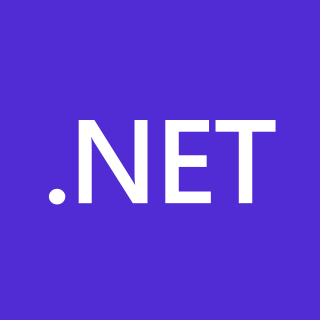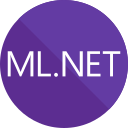Windows Presentation Foundation (WPF) is a free and open-source user interface framework for Windows-based desktop applications. WPF applications are based in .NET, and are primarily developed using C# and XAML.
In Microsoft Windows applications programming, OLE Automation is an inter-process communication mechanism created by Microsoft. It is based on a subset of Component Object Model (COM) that was intended for use by scripting languages – originally Visual Basic – but now is used by several languages on Windows. All automation objects are required to implement the IDispatch interface. It provides an infrastructure whereby applications called automation controllers can access and manipulate shared automation objects that are exported by other applications. It supersedes Dynamic Data Exchange (DDE), an older mechanism for applications to control one another. As with DDE, in OLE Automation the automation controller is the "client" and the application exporting the automation objects is the "server".
James D. McCaffrey is an American research software engineer at Microsoft Research known for his contributions to machine learning, combinatorics, and software test automation.

Visual Studio is an integrated development environment (IDE) developed by Microsoft. It is used to develop computer programs including websites, web apps, web services and mobile apps. Visual Studio uses Microsoft software development platforms including Windows API, Windows Forms, Windows Presentation Foundation (WPF), Windows Store and Microsoft Silverlight. It can produce both native code and managed code.
Eclipse Deeplearning4j is a programming library written in Java for the Java virtual machine (JVM). It is a framework with wide support for deep learning algorithms. Deeplearning4j includes implementations of the restricted Boltzmann machine, deep belief net, deep autoencoder, stacked denoising autoencoder and recursive neural tensor network, word2vec, doc2vec, and GloVe. These algorithms all include distributed parallel versions that integrate with Apache Hadoop and Spark.

The .NET platform is a free and open-source, managed computer software framework for Windows, Linux, and macOS operating systems. The project is mainly developed by Microsoft employees by way of the .NET Foundation and is released under an MIT License.

TensorFlow is a free and open-source software library for machine learning and artificial intelligence. It can be used across a range of tasks but has a particular focus on training and inference of deep neural networks.
The following table compares notable software frameworks, libraries and computer programs for deep learning.
Apache MXNet is an open-source deep learning software framework that trains and deploys deep neural networks. It aims to be scalable, allows fast model training, and supports a flexible programming model and multiple programming languages. The MXNet library is portable and can scale to multiple GPUs and machines. It was co-developed by Carlos Guestrin at the University of Washington, along with GraphLab.
Chainer is an open source deep learning framework written purely in Python on top of NumPy and CuPy Python libraries. The development is led by Japanese venture company Preferred Networks in partnership with IBM, Intel, Microsoft, and Nvidia.
PyTorch is a machine learning library based on the Torch library, used for applications such as computer vision and natural language processing, originally developed by Meta AI and now part of the Linux Foundation umbrella. It is recognized as one of the two most popular machine learning libraries alongside TensorFlow, offering free and open-source software released under the modified BSD license. Although the Python interface is more polished and the primary focus of development, PyTorch also has a C++ interface.
The Open Neural Network Exchange (ONNX) [] is an open-source artificial intelligence ecosystem of technology companies and research organizations that establish open standards for representing machine learning algorithms and software tools to promote innovation and collaboration in the AI sector. ONNX is available on GitHub.
In computer vision, SqueezeNet is the name of a deep neural network for image classification that was released in 2016. SqueezeNet was developed by researchers at DeepScale, University of California, Berkeley, and Stanford University. In designing SqueezeNet, the authors' goal was to create a smaller neural network with fewer parameters while achieving competitive accuracy.
Amazon SageMaker is a cloud-based machine-learning platform that allows the creation, training, and deployment by developers of machine-learning (ML) models on the cloud. It can be used to deploy ML models on embedded systems and edge-devices. The platform was launched in November 2017.

Infer.NET is a free and open source .NET software library for machine learning. It supports running Bayesian inference in graphical models and can also be used for probabilistic programming.

NNI is a free and open-source AutoML toolkit developed by Microsoft. It is used to automate feature engineering, model compression, neural architecture search, and hyper-parameter tuning.
LightGBM, short for Light Gradient-Boosting Machine, is a free and open-source distributed gradient-boosting framework for machine learning, originally developed by Microsoft. It is based on decision tree algorithms and used for ranking, classification and other machine learning tasks. The development focus is on performance and scalability.

CatBoost is an open-source software library developed by Yandex. It provides a gradient boosting framework which among other features attempts to solve for Categorical features using a permutation driven alternative compared to the classical algorithm. It works on Linux, Windows, macOS, and is available in Python, R, and models built using catboost can be used for predictions in C++, Java, C#, Rust, Core ML, ONNX, and PMML. The source code is licensed under Apache License and available on GitHub.






